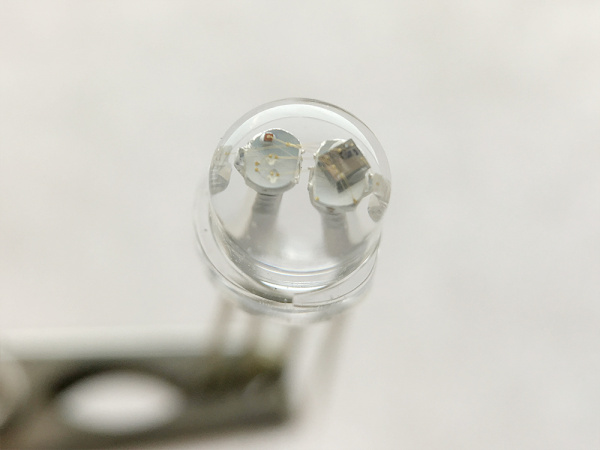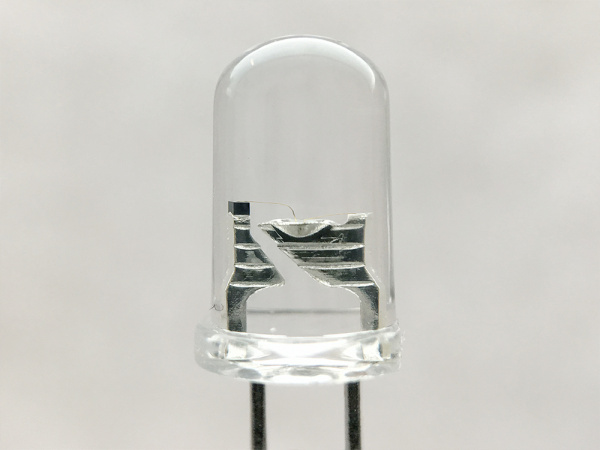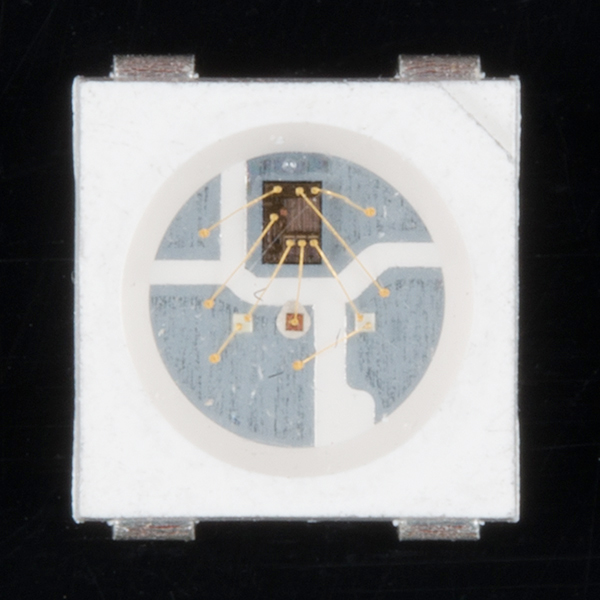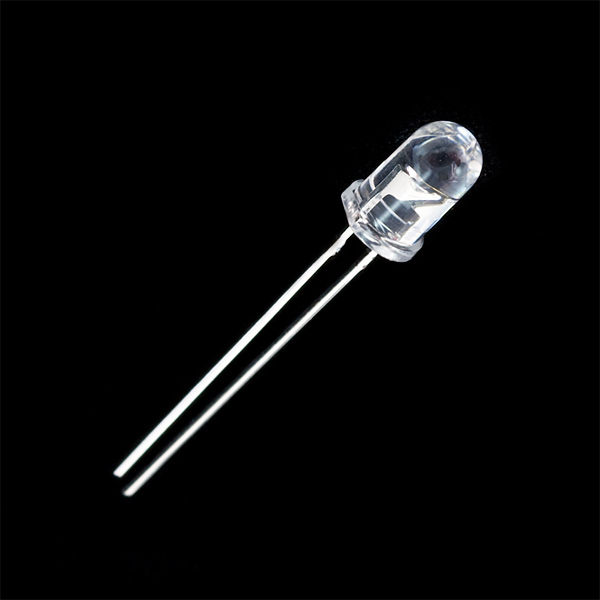Light-Emitting Diodes (LEDs)
Types of LEDs
Congratulations, you know the basics! Maybe you've even gotten your hands on a few LEDs and started lighting stuff up, that's awesome! How would you like to step up your blinky game? Let's talk about makin' it fancy outside of your standard LED.
Types of LEDs
Here's the cast of other characters.
RGB LEDs
RGB (Red-Green-Blue) LEDs are actually three LEDs in one! But that doesn't mean it can only make three colors. Because red, green, and blue are the additive primary colors, you can control the intensity of each to create every color of the rainbow. Most RGB LEDs have four pins: one for each color, and a common pin. On some, the common pin is the anode, and on others, it's the cathode.
LEDs w/ Integrated Circuits
Cycling
Some LEDs are smarter than others. Take the cycling LED, for example. Inside these LEDs, there's actually an integrated circuit that allows the LED to blink without any outside controller. Here's a closeup of the IC (the big, black square chip on the tip of the anvil) controlling the colors.
Simply power it up and watch it go! These are great for projects where you want a little bit more action but don't have room for control circuitry. There are even RGB flashing LEDs that cycle through thousands of colors!
Addressable LEDs
Other types of LEDs can be controlled individually. There are different chipsets (WS2812, APA102, UCS1903, to name a few) used to control an individual LED that is chained together. Below is a closeup of a WS2812. The bigger square IC on the right controls the colors individually.
Built-In Resistor
What is this magic? An LED with a built-in resistor? That's right. There are also LEDs that include a small, current limiting resistor. If you look closely at the image below, there is a small, black square IC on the post to limit the current on these types of LEDs.
So plug the LED with built-in resistor to your power source and light it up! We have tested these types of LEDs at 3.3V, 5V, and 9V.
Surface Mount (SMD) Packages
SMD LEDs aren't so much a specific kind of LED but a package type. As electronics get smaller and smaller, manufacturers have figured out how to cram more components in a smaller space. SMD (Surface Mount Device) parts are tiny versions of their standard counterparts. Here's a closeup of a WS2812B addressable LED packaged into a small 5050 package.
SMD LEDs come in several sizes, from fairly large to smaller than a grain of rice! Because they're so small, and have pads instead of legs, they're not as easy to work with, but if you're tight on space, they might be just what the doctor ordered.
 |
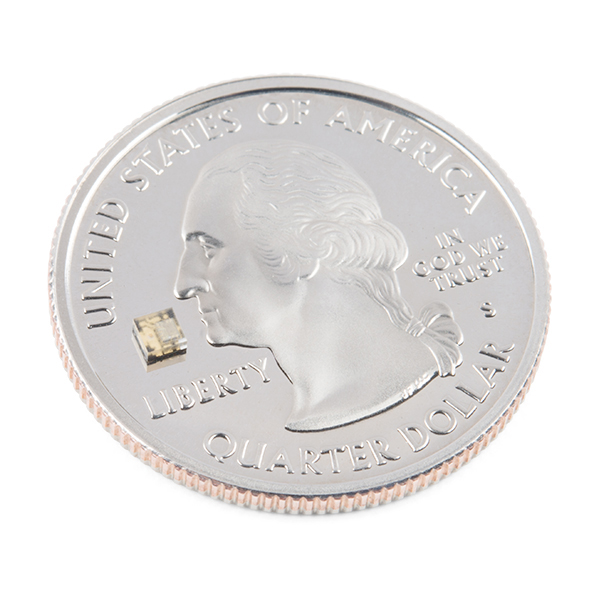 |
| WS2812B-5050 Package | APA102-2020 Package |
SMD LEDs also make it easier and quicker for pick and place machines to populate a lot of LEDs onto PCBs and strips. You would probably not to manually solder all of those components by hand.
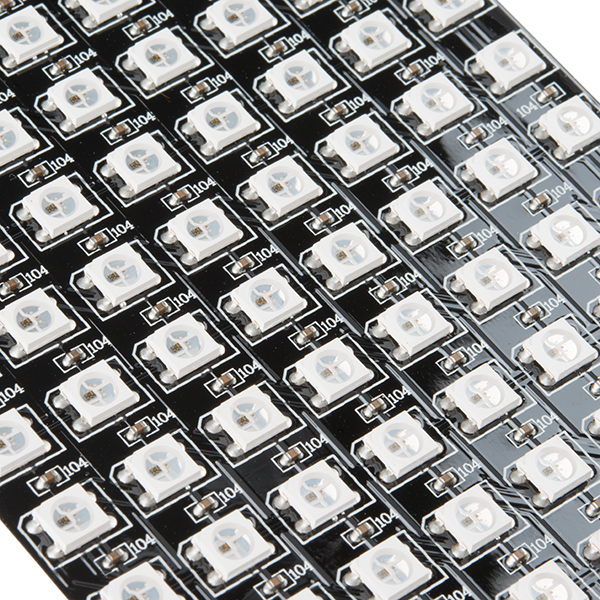 |
 |
| Close Up of 8x32 Addressable (WS2812-5050) LED Matrix | 5M Addressable (APA102-5050) LED Strip Powered |
High Power
High-Power LEDs from manufacturers like Luxeon and CREE, are crazy bright. These are brighter than the super brights! Generally, an LED is considered High-Power if it can dissipate 1 Watt or more of power. These are the fancy LEDs that you find in really nice flashlights. Arrays of them can even be built for spotlights and automobile headlights. Because there's so much power being pumped through the LED, these often require heatsinks. A heatsink is basically a chunk of heat conducting metal with lots of surface area whose job is to transfer as much waste heat into the surrounding air as possible. There can be some heat dissipation built into the design of some breakout board such as the one shown below.
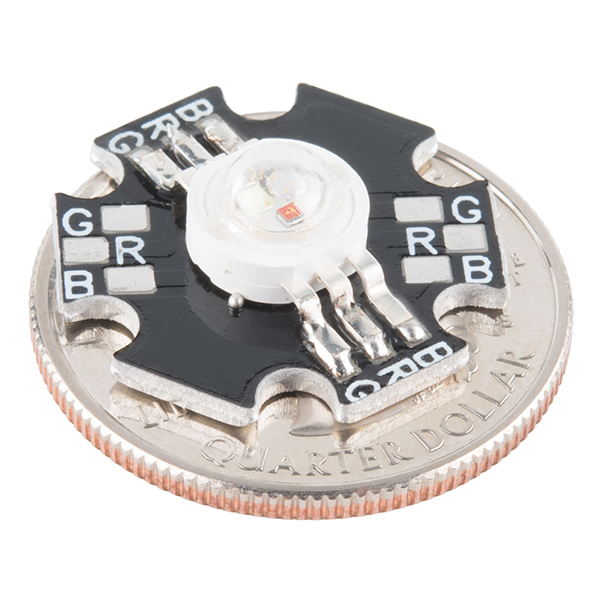 |
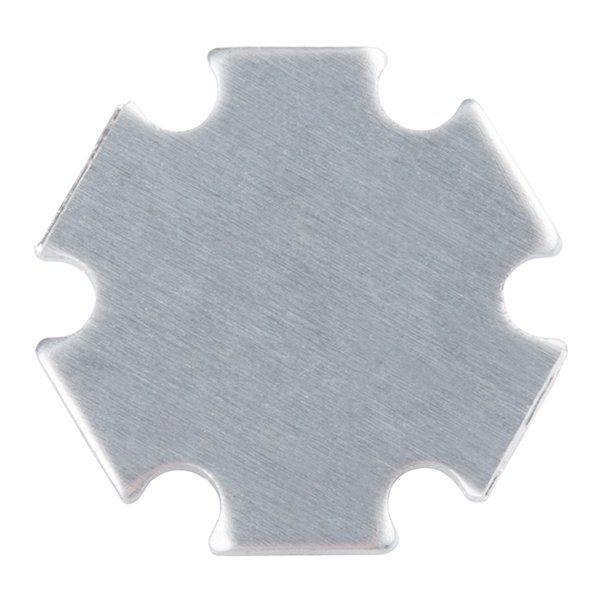 |
| High Power RGB LED | Aluminum Back for some Heat Dissipation |
High-Power LEDs can generate so much waste heat that they'll damage themselves without proper cooling. Don't let the term "waste heat" fool you, though, these devices are still incredibly efficient compared to conventional bulbs. To control, you could use a constant current LED driver.
Special LEDs
There are even LEDs that emit light outside of the normal visible spectrum. You probably use infrared LEDs every day, for instance. They're used in things like TV remotes to send small pieces of information in the form of invisible light! These may look like standard LEDs so it will be hard to distinguish from normal LEDs.
On the opposite end of the spectrum you can also get ultraviolet LEDs. Ultraviolet LEDs will make certain materials fluoresce, just like a blacklight! They're also used for disinfecting surfaces, because many bacteria are sensitive to UV radiation. They may also be used counterfeit detection (bills, credit cards, documents, etc), sun burns, the list goes on. Please wear eye protection when using these LEDs.
More LEDs
With fancy LEDs like these at your disposal, there's no excuse for leaving anything un-illuminated. However, if your thirst for LED knowledge hasn't been slaked, then read on, and we'll get into the nitty-gritty on LEDs, color, and luminous intensity!



